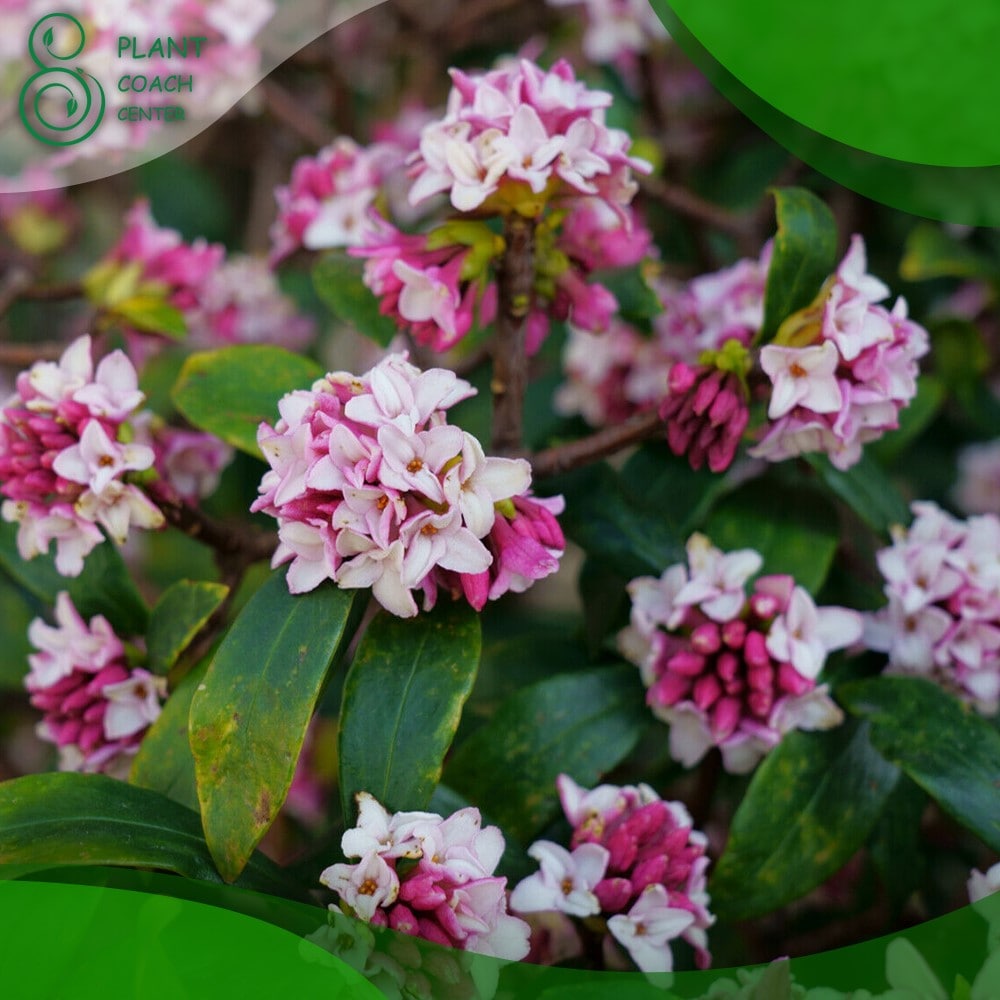Introduction to When to Prune Daphne
Daphne, with its fragrant blooms and graceful foliage, graces many gardens with its presence. Yet, maintaining its beauty and vitality requires more than just a casual glance. The key lies in the art of pruning. Pruning isn’t just about aesthetics; it’s a fundamental practice for Daphne’s well-being. Whether you’re a seasoned gardener or just getting your hands dirty, understanding when to prune Daphne is the gateway to a thriving and attractive plant. In the realm of horticulture, timing is everything. Daphne is no exception.
A well-timed prune can encourage vigorous growth and a profusion of flowers, while an ill-timed one may jeopardize its health and future blossoms. In the following sections in plantcoachcenter.com , we’ll delve into the intricacies of Daphne pruning, demystifying the best times to trim these enchanting shrubs, ensuring your Daphne remains a stunning centerpiece in your garden.
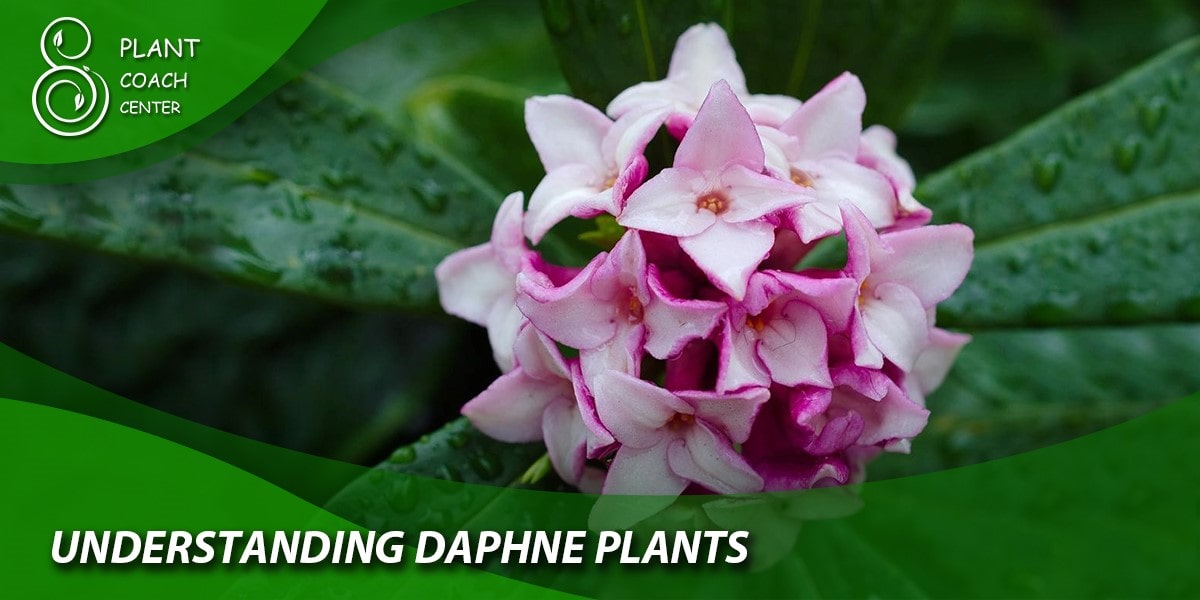
Understanding Daphne Plants
Daphne, encompassing a diverse family of flowering shrubs, is a botanical gem cherished by gardeners worldwide. To navigate the world of Daphne pruning effectively, it’s crucial to comprehend the essence of these plants.
Common Varieties and Characteristics:
Daphne can be found in various species and cultivars, but a few common varieties prevail:
Daphne odora: Renowned for its powerful fragrance, Daphne odora features glossy, evergreen leaves and pink to white blossoms. It’s a favored choice for its aromatic presence in the garden.
Daphne x burkwoodii: This hybrid Daphne offers an exquisite combination of fragrance and bloom. Its flowers can be white, pink, or even pale lavender, gracing your garden with a delightful visual and olfactory treat.
Daphne mezereum: Known for its vibrant, early spring blooms, Daphne mezereum produces clusters of vivid red or pink flowers on bare branches. However, exercise caution as its berries are toxic.
Preferred Growing Conditions:
Daphne, though diverse, shares some common preferences when it comes to its growing environment:
Sunlight: Most Daphne varieties thrive in partial to full sunlight. They appreciate morning sun and dappled afternoon shade, making them suitable for both sunny and partially shaded areas.
Soil Type: Well-drained soil is non-negotiable for Daphne’s health. They abhor waterlogged roots, so ensure the soil is loose, rich, and adequately drained. Amending heavy soils with organic matter can work wonders.
Hardiness Zones: Daphne’s hardiness varies by species, but generally, they prefer temperate climates and thrive in USDA hardiness zones 4 to 9.
Understanding the nuances of different Daphne varieties and their ideal growing conditions sets the stage for successful pruning. Now that you know the basics let’s delve into the heart of the matter: when to prune these enchanting shrubs for optimal results.
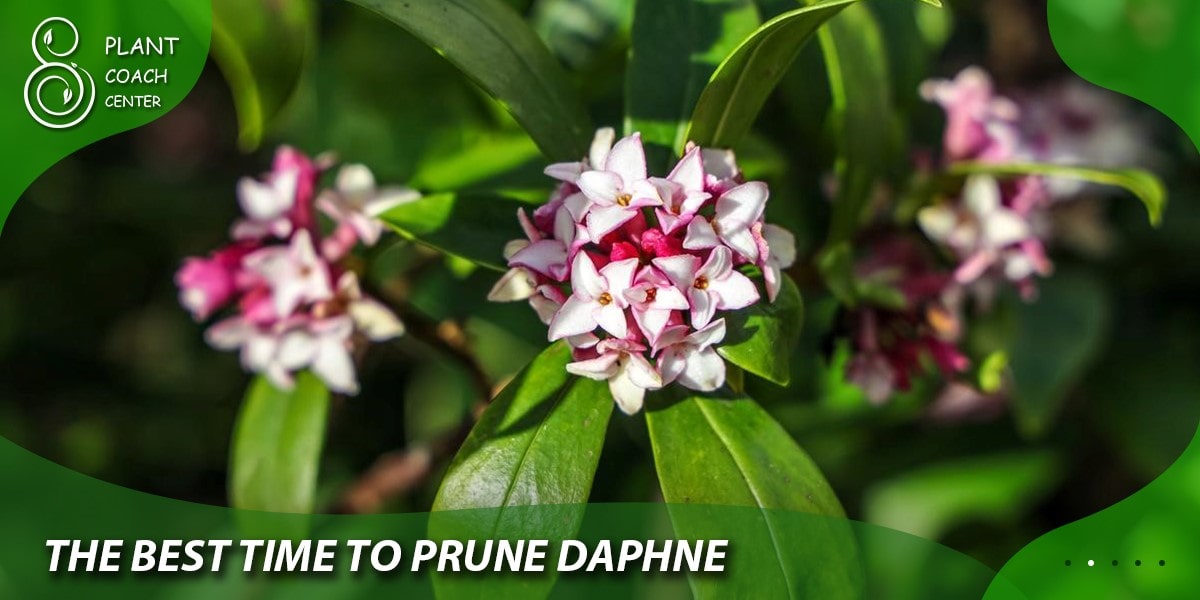
The Best Time to Prune Daphne
Pruning Daphne plants is akin to conducting a delicate symphony; timing, in this endeavor, is everything. Understanding the optimal moments for this horticultural task is the first step toward nurturing a thriving and visually captivating Daphne in your garden.
Key Seasons for Daphne Pruning: Spring and Early Summer
Spring (March to April):
In the realm of Daphne pruning, spring reigns supreme. The transition from winter to spring marks the ideal time to embark on this pruning journey. Here’s why:
Post-Bloom Brilliance: Daphne, in its graceful beauty, graces us with fragrant blooms in late winter or early spring. Pruning immediately after this flowering display allows you to shape the plant without sacrificing future blossoms. Waiting too long into spring risks cutting off next year’s buds.
Growth Stimulation: Early spring pruning stimulates fresh growth, ensuring your Daphne remains vigorous and robust throughout the growing season.
Early Summer (June to July):
While spring takes the spotlight, early summer also presents a suitable window for Daphne pruning. Here’s why it’s a contender:
Shaping and Rejuvenation: Early summer pruning focuses on shaping and rejuvenating the plant. This is an opportunity to trim any unruly growth or reshape your Daphne to maintain its aesthetic appeal.
Maintenance Pruning: For Daphnes that have already been pruned in spring, light maintenance pruning in early summer can keep them in check and promote a more compact form.
Reasons Behind this Timing:
The timing of Daphne pruning aligns with the plant’s natural growth cycles and bloom patterns, making it crucial for several reasons:
Preservation of Blooms: Pruning immediately after spring bloom ensures you enjoy the full spectacle of Daphne’s fragrant flowers each year.
Growth Promotion: Spring pruning capitalizes on the plant’s natural inclination for growth during this season, resulting in healthier, lusher foliage.
Avoiding Stress: Pruning outside these windows can stress the plant, potentially reducing its vigor and making it susceptible to diseases and pests.
Understanding the rhythm of your Daphne’s growth and the synchronization of your pruning with its seasonal shifts is the art and science of Daphne care. As we delve deeper into the specifics of spring and early summer pruning in the following sections, you’ll gain the expertise needed to orchestrate your Daphne’s flourishing performance in your garden.
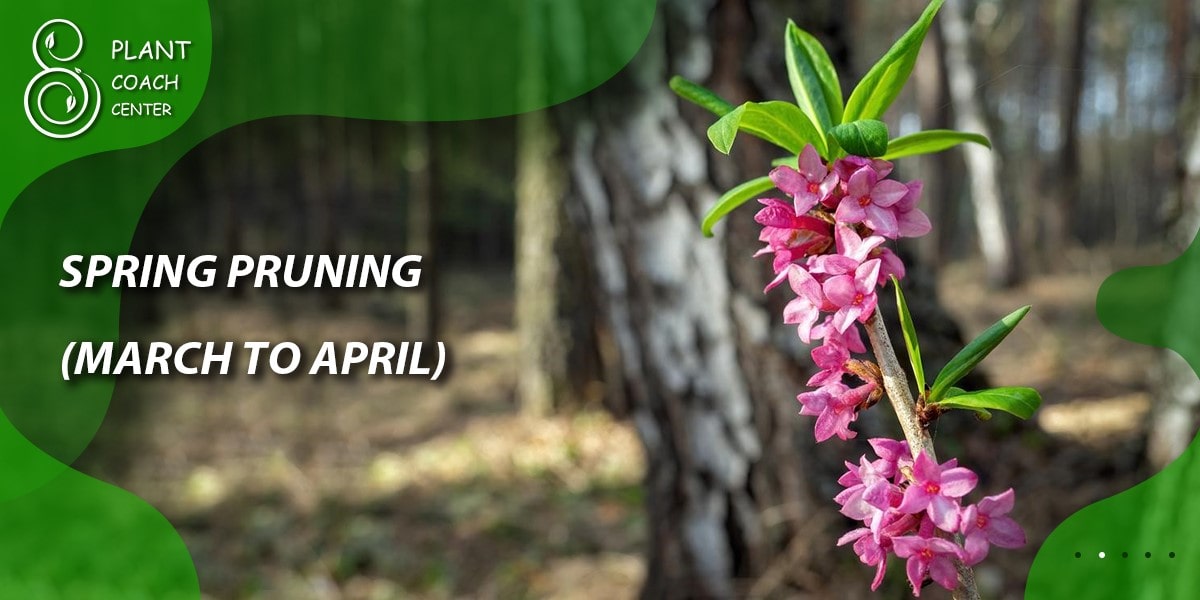
Spring Pruning (March to April)
Spring, a season of rebirth and rejuvenation, is the prime moment to embark on the journey of pruning your Daphne. This section lays out the precise steps for a successful spring pruning, ensuring your Daphne thrives in the year to come.
Specific Steps for Pruning Daphne in the Spring:
Timing is Crucial: As the last winter chills recede and your Daphne begins to grace your garden with fragrant blooms, exercise patience. Wait until the flowering spectacle concludes before you pick up those pruners. Pruning immediately after flowering, ideally in March to early April, is the golden rule. This timing guarantees you won’t inadvertently snip off the potential blossoms for the next year.
Assess the Branches: Begin by carefully inspecting your Daphne. Identify dead, diseased, or crossing branches that need removal. Dead branches are easy to spot, often lacking leaves or exhibiting obvious signs of decay. Diseased branches may show discoloration or unusual growth. Crossing branches can hinder healthy air circulation and should also be pruned.
Selective Pruning: With a sharp pair of pruning shears, make clean cuts just above a healthy bud or lateral branch. Aim for an angle that sheds water away from the cut. Remove no more than one-third of the plant’s overall size to avoid stressing it.
Shape and Structure: As you prune, keep an eye on the overall shape and structure of your Daphne. Aim for a balanced and open form that allows sunlight and air to reach all parts of the plant. This helps prevent disease and encourages even growth.
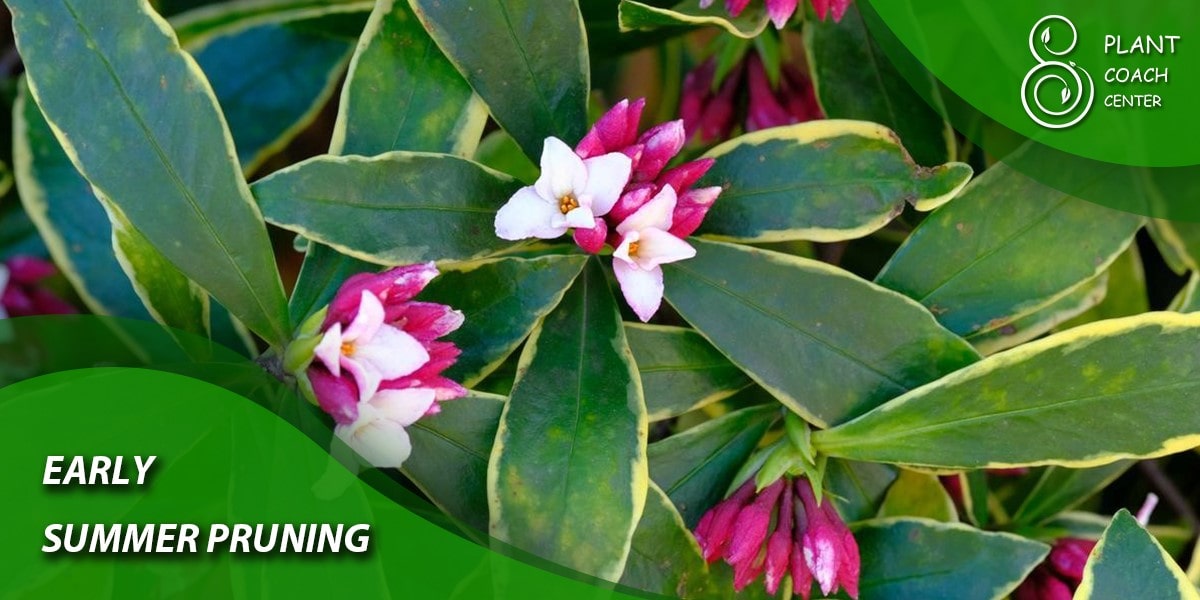
Emphasizing the Importance of Post-Flowering Pruning:
Pruning right after the spring bloom is paramount. This timing ensures you enjoy the full splendor of Daphne’s fragrant flowers each year. Delaying the pruning until later in the spring or summer risks cutting off next year’s buds, diminishing the floral display. Your patience in waiting for the flowers to fade before you prune will be rewarded with a more vibrant and vigorous Daphne.
Tools and Techniques for Effective Spring Pruning:
Pruning Shears: Invest in a high-quality pair of pruning shears, as clean cuts minimize damage to the plant. Keep them sharp to prevent tearing or crushing of branches.
Sanitization: Before you start pruning, sterilize your pruning tools with rubbing alcohol or a mixture of water and bleach to prevent the spread of disease.
Eye Protection and Gloves: Protect your eyes and hands with safety glasses and gloves. This ensures safety while working with potentially sharp or splintered branches.
Step-By-Step Approach: Follow a systematic approach to pruning, starting with dead or diseased branches, then moving to shaping and thinning as needed.
By adhering to these specific steps, understanding the critical timing, and employing the right tools, you’ll master the art of spring pruning for your Daphne, ensuring it continues to grace your garden with its beauty and fragrance year after year.
Early Summer Pruning (June to July)
While spring claims the spotlight in the world of Daphne pruning, early summer emerges as a worthy contender for those seeking to finesse the art of Daphne care. In this section, we’ll delve into the rationale behind early summer pruning, its unique benefits, and how to execute it without compromising your Daphne’s well-being.
Why Early Summer is Suitable for Daphne Pruning:
Shaping and Rejuvenation: Early summer, characterized by vigorous growth, offers an opportune moment for shaping your Daphne. Trimming back unruly branches and shaping the plant helps maintain its aesthetic appeal, ensuring it remains a focal point in your garden.
Blooming Season Transition: Pruning in early summer allows you to address any post-spring bloom issues. This includes trimming spent flowers and addressing any damage that may have occurred during the spring season.
Maintenance and Size Control: For Daphnes that have already undergone spring pruning, early summer provides an interval for maintenance pruning. It helps keep the plant’s size in check and encourages a more compact form.

Benefits of Summer Pruning:
Enhanced Airflow: Removing overcrowded or crossing branches during early summer improves air circulation within the plant, reducing the risk of fungal diseases.
Stimulated Growth: Pruning during the active growth phase of early summer can stimulate new growth, ensuring a denser and healthier Daphne.
Shape Maintenance: Shaping in early summer allows you to guide the plant’s growth pattern, maintaining a well-proportioned and visually appealing appearance.
Guidance for Safe and Effective Summer Pruning:
Moderation is Key: Exercise restraint when pruning in early summer. Unlike the more substantial spring pruning, focus on selective removal of unwanted growth rather than extensive shaping.
Mind the Heat: Perform summer pruning on a mild, overcast day to minimize stress on the plant. Avoid pruning during hot, dry spells, as this can exacerbate stress.
Target Dead or Diseased Branches: Start by identifying and removing any dead or diseased branches. Always make clean cuts just above a healthy bud or lateral branch.
Avoid Drastic Reduction: Refrain from heavy pruning in early summer, as it may lead to reduced flowering the following spring.
Sanitize Tools: Before pruning, ensure your tools are clean and sanitized to prevent the spread of disease.
By embracing early summer pruning with care and precision, you can harness its advantages to shape, rejuvenate, and maintain your Daphne, ensuring it continues to thrive and embellish your garden with its allure.
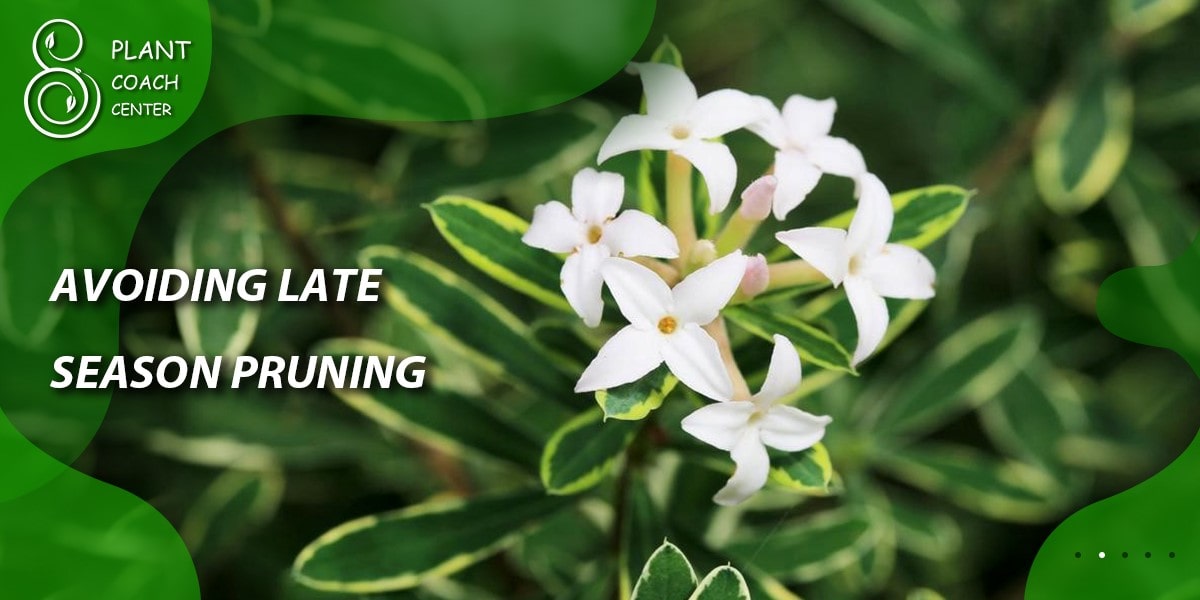
Avoiding Late-Season Pruning
As the seasons transition from summer to fall, it’s imperative to exercise caution and resist the urge to prune your Daphne shrubs during late summer or fall. While the allure of a well-trimmed garden may beckon, late-season pruning can pose significant risks to your Daphne’s overall health and winter hardiness.
Potential Risks of Late-Season Pruning:
Reduced Winter Hardiness: Late-season pruning can leave your Daphne vulnerable to harsh winter conditions. Fresh growth spurred by pruning in late summer or fall may not have sufficient time to harden off before the onset of cold weather. This tender growth is more susceptible to frost damage, increasing the risk of winter injury.
Blossom Sacrifice: Late-season pruning also jeopardizes the upcoming spring bloom. Daphne sets its flower buds in late summer and early fall for the following spring’s display. Pruning during this period can inadvertently remove these budding sites, robbing you of the fragrant blooms you eagerly anticipate.
Stress and Disease Vulnerability: Late-season pruning creates stress for your Daphne when it should be preparing for the dormancy of winter. Stressed plants are more susceptible to diseases and pests, further endangering the plant’s well-being.
Encouragement to Prune in the Right Seasons:
It’s easy to succumb to the allure of pruning, especially as autumn’s cooler days beckon us into the garden. However, the key to a thriving Daphne lies in the proper timing of this task. As tempting as it may be, resist the urge to trim your Daphne during late summer or fall. Instead, adhere to the golden rule: prune in spring after the bloom or early summer.
By following this simple guideline and avoiding late-season pruning, you safeguard your Daphne’s winter hardiness, preserve its future blossoms, and keep it resilient against the challenges of the seasons. Your patience will be handsomely rewarded with a flourishing and fragrant Daphne when spring returns once more.
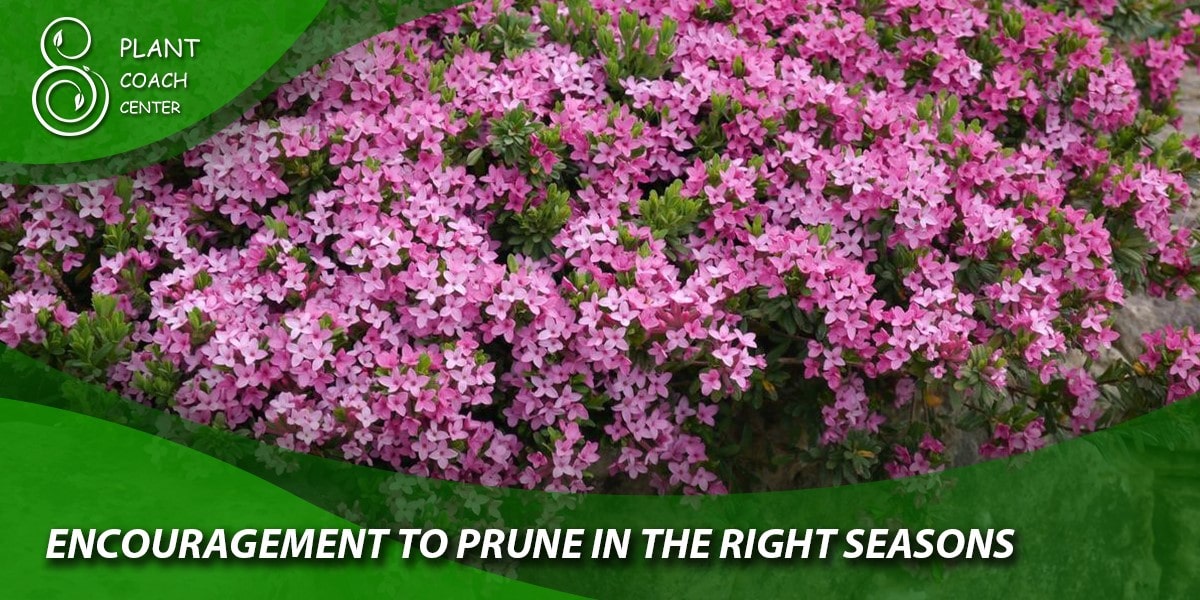
Conclusion
In the realm of Daphne care, timing emerges as the linchpin for cultivating healthier, more vibrant shrubs. The significance of precisely scheduling your pruning endeavors cannot be overstated. By adhering to the recommended pruning schedule – namely, the delicate art of spring pruning after the bloom or the strategic early summer trim – you unlock the potential for a Daphne that thrives in both form and fragrance.
Pruning at the right moment preserves future blossoms, fosters vigorous growth, and safeguards your plant’s winter hardiness. It’s a patient gardener’s investment, one that yields fragrant dividends when spring’s gentle breezes return. So, resist the temptation to trim in the wrong seasons, and embrace the art of timing in your Daphne pruning endeavors – for in this careful choreography lies the secret to a garden adorned with flourishing and fragrant Daphne shrubs year after year.
FAQs
When is the best time to prune Daphne plants?
Spring after flowering or early summer.
Can I prune Daphne in late summer or fall?
Avoid late-season pruning as it risks winter damage and blossom loss.
What tools should I use for Daphne pruning?
Sharp pruning shears and sanitized tools are essential.
How much of the plant can I prune at once?
Remove no more than one-third of the plant's size in a single pruning session.
Can I shape my Daphne while pruning?
Yes, shaping is possible during early summer pruning.
Why is it crucial to avoid pruning after the spring bloom?
Pruning after flowering preserves future blossoms and plant health.


